This article was medically reviewed by Luba Lee, FNP-BC, MS. Luba Lee, FNP-BC is a Board-Certified Family Nurse Practitioner (FNP) and educator in Tennessee with over a decade of clinical experience. Luba has certifications in Pediatric Advanced Life Support (PALS), Emergency Medicine, Advanced Cardiac Life Support (ACLS), Team Building, and Critical Care Nursing. She received her Master of Science in Nursing (MSN) from the University of Tennessee in 2006.
There are 11 references cited in this article, which can be found at the bottom of the page.
wikiHow marks an article as reader-approved once it receives enough positive feedback. This article has 17 testimonials from our readers, earning it our reader-approved status.
This article has been viewed 1,346,590 times.
You may develop a rash due to an allergy, contact with an irritant, or exposure to certain chemicals or solutions. If you believe the rash is from an allergy or an irritant and appears mild, you can try a home remedy. However, if the rash looks red, is itchy or uncomfortable, and seems to be spreading all over your body, you may want to consider talking to your doctor about prescription medications to treat the rash.
Steps
Using Natural Remedies
-
1Use a cold compress. Applying an ice pack or a cool cloth is an easy way to help to soothe a rash.[1] Try wrapping an ice pack in a paper towel and holding it on the rash for up to 20 minutes. Then, give your skin a break for about an hour or so before applying another ice pack.
- You can also hold a clean washcloth under cold running water for a few minutes and wring out the excess water. Then apply the cool cloth to your rash.
- Use a new paper towel or cloth every time to avoid spreading the rash.
-
2Rinse the rash with water and let it air dry. If you think the rash is the result of contact with poison ivy or poison oak, you should rinse the area right away with warm, soapy water and let it air dry so you do not irritate it by scrubbing it with a towel or cloth. This will prevent the spread of the rash, as once the urushiol is washed off your skin, you cannot give anyone else the poison ivy or the poison oak.[2]
- If the rash develops due to an allergic reaction, you can take a bath or shower in cold water with non-drying soap and let your skin air dry. This can help to soothe any redness or discomfort.
- Change into some loose clothing when you are dry. Tight clothing may irritate a rash further, so it is important to switch to loose-fitting clothing if you are dealing with a rash. Opt for lightweight, natural fiber materials, such as a 100% cotton t-shirt or a pair of loose-fitting linen pants.
Advertisement -
3Take an oatmeal bath. Colloidal oatmeal baths have been used to soothe rashes and itchy skin for centuries. The gluten in the oatmeal has moisturizing properties and it coats your skin when you bathe in it. This protective coating may help to soothe the rash and reduce itchiness.[3]
- You can find colloidal oatmeal bath packets in drug stores.
- Mix a packet of oatmeal with warm water in your bathtub and soak in the solution for about 20 minutes.
-
4Add some baking soda to bathwater. Adding baking soda to bathwater may also help to soothe a rash. If you don't have colloidal oatmeal or if you are sensitive to oatmeal, then you can try taking a bath in a baking soda solution.[4]
- Try adding one cup of baking soda to a bathtub of warm water and soak in the solution for about 20 minutes.
-
5Make a chamomile tea compress. Chamomile tea is known for its soothing properties. You can drink chamomile tea or apply it to your skin. Chamomile tea has also been shown to help reduce skin irritation, so it may help with a rash.[5]
- To make a chamomile compress, steep two to three teaspoons of chamomile flowers in one cup of boiling water for about five minutes.
- Then, strain the flowers out of the water and allow the tea to cool to room temperature.
- When the tea has cooled, soak a clean cotton cloth in the tea and wring out some of the excess tea from the cloth.
- Apply the cloth to your rash. Leave the cloth in place for about 10 minutes.
-
6Try some arnica ointment. An arnica ointment can also help to soothe a rash when applied to your skin. This natural remedy has been used for centuries to treat irritation from bug bites, acne, and blisters.[6] Follow the manufacturer’s instructions for use.
- Make sure that the ointment contains no more than 15% arnica oil or it may irritate your skin.
- You can find arnica ointment in health food stores or the natural section of some large grocery stores.
-
7Consider tea tree extract. Tea tree extract has been shown to be effective against a wide range of microorganisms, such as candida and staphylococcus aureus. This treatment option might work best for a rash from a mild fungal infection.[7] If you have a rash caused by a fungal infection, such as jock itch, athlete's foot, or ringworm, then using a tea tree oil ointment might help.
- Try using a 10% tea tree oil cream on your rash to see if it helps. If it does not seem to be helping after a few days, then see your doctor.
- Keep in mind that tea tree oil has not been shown to be as effective as some other prescription and over-the-counter topical treatments.
-
8Cool off if you have a heat rash. If you have been exposed to extreme heat and have developed an inflamed, hot rash on your body, as well as lightheadedness and fatigue, you may have a heat rash. If you suspect you have heat rash, get out of the sun right away and sit in a cool, air-conditioned area. You should then remove any sweaty or damp clothing and take a cool shower to lower your body temperature.
- You should also drink plenty of cool water to stay hydrated and to help your body recover from heat exposure.
- Avoid touching or squeezing any blisters or bumps due to heat rash.
- Seek medical care if your heat rash does not improve after two to three days, or if you experience severe symptoms like vomiting, headaches, dizziness, and nausea.
Using Over-the-Counter Remedies
-
1Apply calamine lotion. Calamine lotion can help to soothe and calm your rash, especially when the rash is from poison oak, poison ivy, poison sumac, or insect bites.[8] [9] You can buy calamine lotion without a prescription in a drug store.
- Apply the lotion to your skin twice per day or as directed by the packaging.
-
2Take an over-the-counter antihistamine. If you develop the rash due to an allergic reaction, you can treat the rash by taking an oral over-the-counter antihistamine, like 10-mg of non-sedating Claritin during the day or 25–50 mg of diphenhydramine (Benadryl) at night. These medications can help to reduce itchiness and help your body fight off its reaction to histamines found in common allergy triggers like cat dander, pollen, and grass.[10]
- Antihistamines also work well on reducing hives on the skin, especially if they are due to an allergic reaction.
-
3Apply hydrocortisone cream for an allergic reaction rash. You can get hydrocortisone cream from your local pharmacy with or without a prescription. Start by applying a thin layer of 1% hydrocortisone cream over your rash. If you are exposed to an allergen like cat dander, pollen, nickel, or another known allergen, you can use the cream 1–4 times per day to reduce redness, irritation, and discomfort caused by your rash.[11]
Getting Medical Treatment
-
1Seek medical attention for severe symptoms. If the rash continues to spread over your body or does not seem to be improving, despite home treatments, it may be time to see your doctor. Your doctor should examine the rash and prescribe a treatment or medication to help get rid of the rash.[12]
- As well, if you experience severe symptoms like difficulty breathing or swallowing, fever, or swelling of your skin or limbs, the rash may be a sign of a more serious medical issue and should be checked by your doctor.
-
2Allow your doctor to examine the rash. Your doctor, or dermatologist, will start by looking for the primary and more prominent feature of the rash. She may notice if the rash is circular in shape, ring-shaped, linear, or snake-like. She may also make note of the rash’s density, color, size, level of tenderness, and temperature (warm or cold to the touch). Finally, she may look at how the rash is distributed on your body, and if it only appears in certain areas or parts of your body.[13]
- Your doctor may also run tests on your rash, such as microscopic analysis of a skin sample and other laboratory tests. She may also run a patch test on you to determine if you are allergic to certain substances.[14]
- You may also be required to undergo blood tests to determine if the rash may be a symptom of a viral infection or disease.
-
3Talk to your doctor about prescription medications. If your doctor diagnoses you with a non-infectious rash due to an allergy or contact with an irritant, she may prescribe a cortisone cream or a medicated ointment to treat the rash.[15]
- If your doctor diagnoses your rash as a symptom of eczema, she may prescribe topical steroids and medicated creams for eczema.
- If your rash is diagnosed as a symptom of a fungal infection like tinea or ringworm, your doctor may prescribe a topical or oral antifungal medication.
- If your rash is diagnosed as a symptom of a viral infection like herpes, your doctor may prescribe oral or intravenous antiviral medication.
-
4Ask your doctor about switching medications. If you think your rash or hives may be due to a reaction from a medication you are taking or have taken recently, you should speak to your doctor about switching medications. Never switch or stop taking medications without your doctor’s approval. Common allergy-causing drugs include:[16]
- Anticonvulsants, usually used to treat epileptic seizures.
- Insulin, usually used to treat diabetes.
- Iodinated x-ray contrast dyes, used when you get x-rays taken.
- Penicillin and other antibiotics, usually used to treat infections.
- If you experience a reaction to medication, you may experience hives, rashes, wheezing, swelling of your tongue, lip or face, and itchy eyes or skin.
-
5Schedule a follow up appointment with your doctor. Once you have received a diagnosis and prescribed treatment from your doctor for your rash, you should schedule a follow-up appointment with your doctor for the following week. This will allow her to check on your progress and ensure the rash is responding well to the treatment.
- If properly diagnosed and treated, noninfectious rashes should fade and heal within one to two weeks.
Expert Q&A
-
QuestionI've been using triamcinolone acetonide cream over a three year period for a chest rash and it just keeps coming back. What can I do?
 Chris M. Matsko, MDDr. Chris M. Matsko is a retired physician based in Pittsburgh, Pennsylvania. With over 25 years of medical research experience, Dr. Matsko was awarded the Pittsburgh Cornell University Leadership Award for Excellence. He holds a BS in Nutritional Science from Cornell University and an MD from the Temple University School of Medicine in 2007. Dr. Matsko earned a Research Writing Certification from the American Medical Writers Association (AMWA) in 2016 and a Medical Writing & Editing Certification from the University of Chicago in 2017.
Chris M. Matsko, MDDr. Chris M. Matsko is a retired physician based in Pittsburgh, Pennsylvania. With over 25 years of medical research experience, Dr. Matsko was awarded the Pittsburgh Cornell University Leadership Award for Excellence. He holds a BS in Nutritional Science from Cornell University and an MD from the Temple University School of Medicine in 2007. Dr. Matsko earned a Research Writing Certification from the American Medical Writers Association (AMWA) in 2016 and a Medical Writing & Editing Certification from the University of Chicago in 2017.
Family Medicine Physician Try a steroid cream. This might decrease the inflammation of the rash. Also, there are antihistamines and calamine lotion that can help out as well.
Try a steroid cream. This might decrease the inflammation of the rash. Also, there are antihistamines and calamine lotion that can help out as well. -
QuestionWhat cream can I use for my rash? Can I use Suave?
 Chris M. Matsko, MDDr. Chris M. Matsko is a retired physician based in Pittsburgh, Pennsylvania. With over 25 years of medical research experience, Dr. Matsko was awarded the Pittsburgh Cornell University Leadership Award for Excellence. He holds a BS in Nutritional Science from Cornell University and an MD from the Temple University School of Medicine in 2007. Dr. Matsko earned a Research Writing Certification from the American Medical Writers Association (AMWA) in 2016 and a Medical Writing & Editing Certification from the University of Chicago in 2017.
Chris M. Matsko, MDDr. Chris M. Matsko is a retired physician based in Pittsburgh, Pennsylvania. With over 25 years of medical research experience, Dr. Matsko was awarded the Pittsburgh Cornell University Leadership Award for Excellence. He holds a BS in Nutritional Science from Cornell University and an MD from the Temple University School of Medicine in 2007. Dr. Matsko earned a Research Writing Certification from the American Medical Writers Association (AMWA) in 2016 and a Medical Writing & Editing Certification from the University of Chicago in 2017.
Family Medicine Physician No, I would recommend using a calamine lotion or steroid cream on your rash.
No, I would recommend using a calamine lotion or steroid cream on your rash.
References
- ↑ https://www.nlm.nih.gov/medlineplus/ency/article/000005.htm
- ↑ http://health.clevelandclinic.org/2015/09/can-treat-warm-weather-skin-rash-home/
- ↑ http://www.ncbi.nlm.nih.gov/books/NBK92761/
- ↑ https://health.clevelandclinic.org/2015/09/can-treat-warm-weather-skin-rash-home/
- ↑ http://www.ncbi.nlm.nih.gov/books/NBK92761/
- ↑ http://www.ncbi.nlm.nih.gov/books/NBK92761/
- ↑ http://www.ncbi.nlm.nih.gov/books/NBK92761/
- ↑ http://www.medicinenet.com/calamine_lotion-topical/article.htm
- ↑ http://health.clevelandclinic.org/2015/09/can-treat-warm-weather-skin-rash-home/
- ↑ http://www.emedicinehealth.com/rash/page5_em.htm
- ↑ https://www.nlm.nih.gov/medlineplus/druginfo/meds/a682793.html
- ↑ http://health.clevelandclinic.org/2015/09/can-treat-warm-weather-skin-rash-home/
- ↑ http://www.medicinenet.com/rash/page8.htm
- ↑ http://www.emedicinehealth.com/rash/page4_em.htm#rash_diagnosis
- ↑ http://www.emedicinehealth.com/rash/page5_em.htm#rash_treatment
- ↑ https://www.nlm.nih.gov/medlineplus/ency/article/000819.htm
About This Article
If you need to get rid of a rash, rinse the area right away to remove any irritants on your skin. Allow the rash to air dry so you don’t further irritate it by rubbing it with a towel. You can also apply calamine lotion or hydrocortisone cream to the rash. If it’s still bothering you, try applying a cold compress to the irritated area for up to 20 minutes. For tips from our medical reviewer on when you should seek professional treatment for a rash, read on!
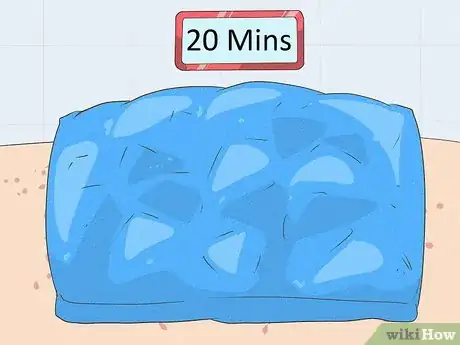
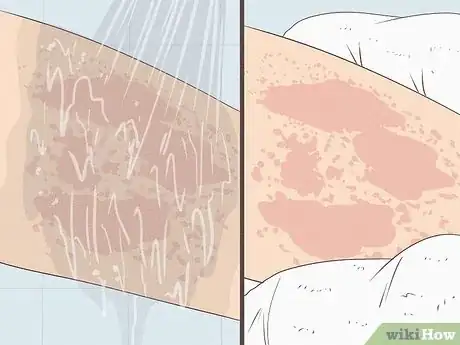


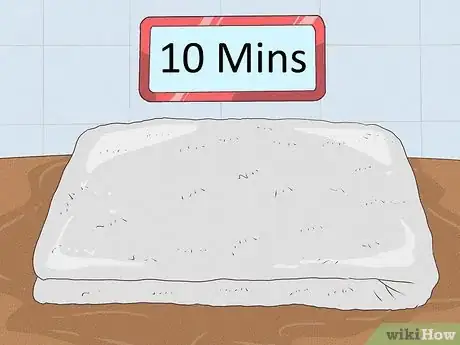
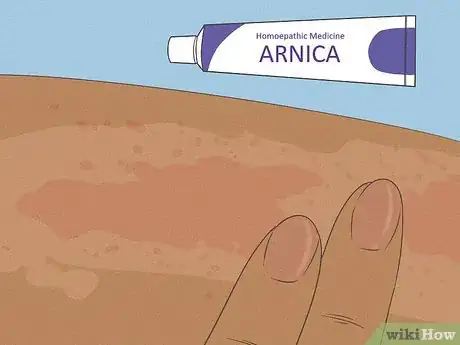
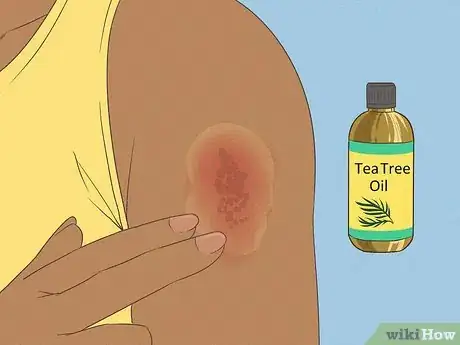
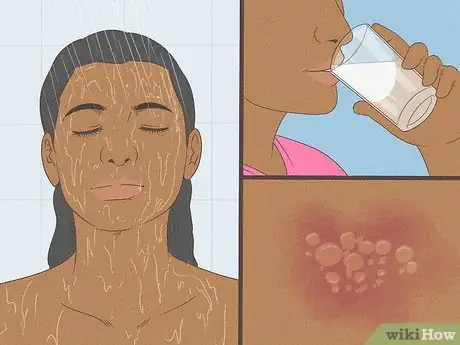
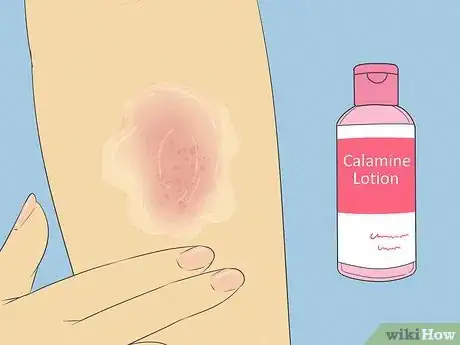
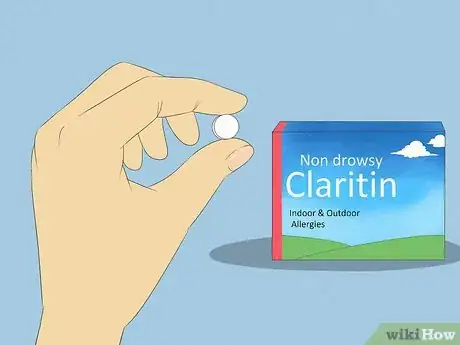
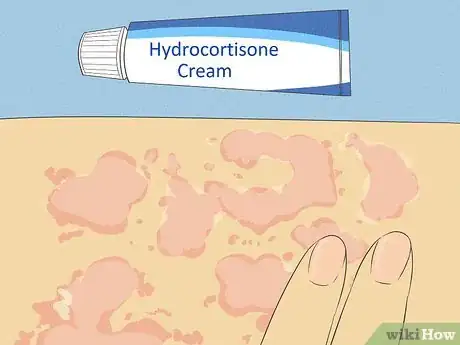
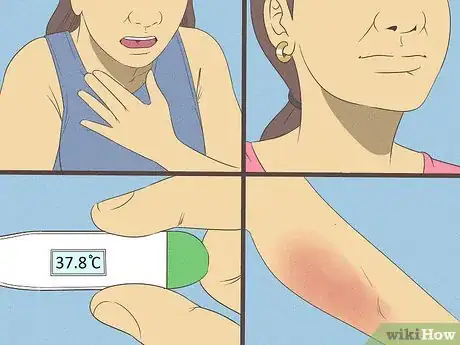
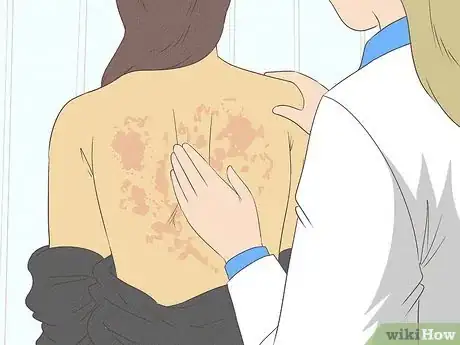
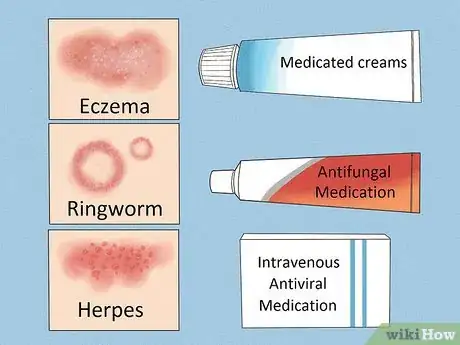
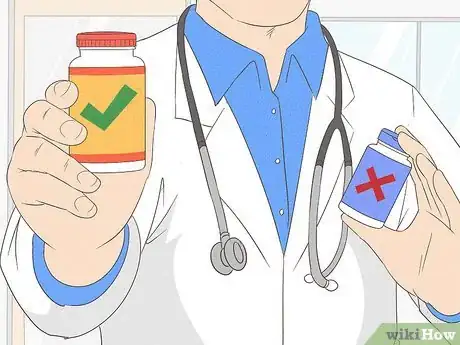




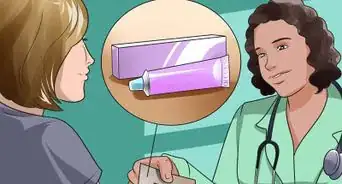
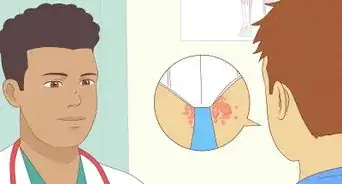

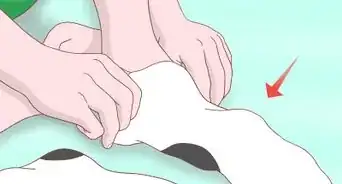
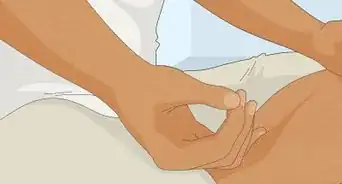
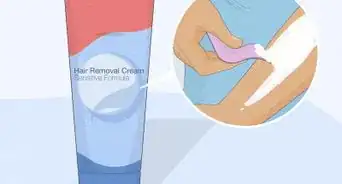

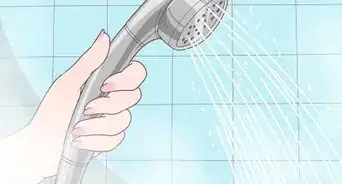
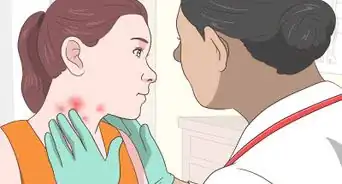
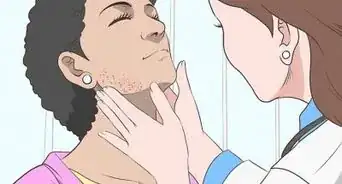











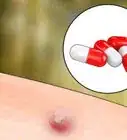






































Medical Disclaimer
The content of this article is not intended to be a substitute for professional medical advice, examination, diagnosis, or treatment. You should always contact your doctor or other qualified healthcare professional before starting, changing, or stopping any kind of health treatment.
Read More...